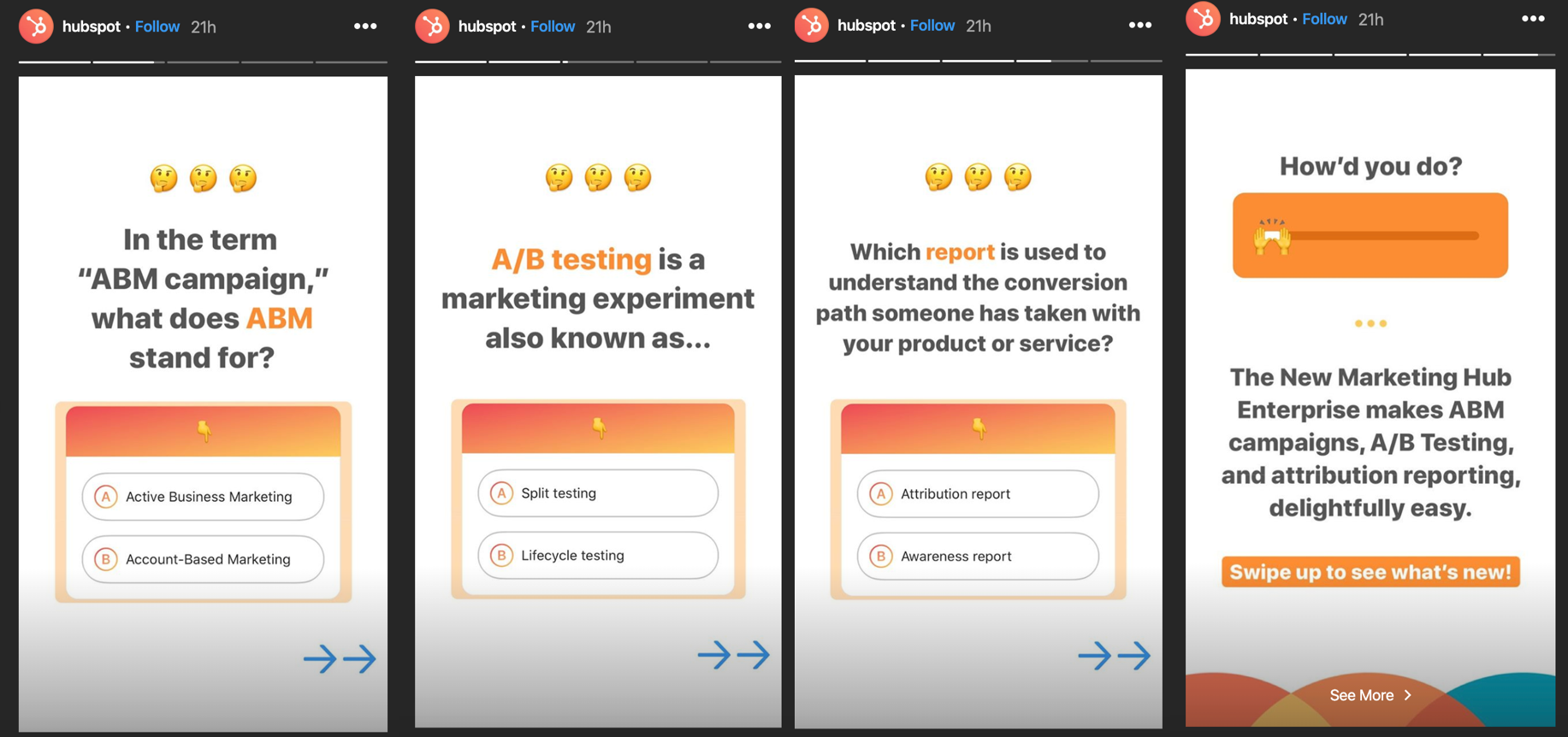Subscribe now and get the latest podcast releases delivered straight to your inbox.
Marketing strategies you need during coronavirus (and beyond) [Infographic]

Apr 12, 2020
![Marketing strategies you need during coronavirus (and beyond) [Infographic]](https://www.impactplus.com/hs-fs/hubfs/content-strategies-coronavirus.jpg?width=768&height=400&name=content-strategies-coronavirus.jpg)
These past few weeks have really changed our normal way of life.
I won’t dive too deep into the details, but thanks to coronavirus, things are different.
I was on track to be about 2,000 miles over my car lease by the end of September, but now I feel like I never leave my bedroom.
My once “dirty laundry and leftover stuff” space is now a mostly-functional office space.
In all seriousness though, people and businesses alike are facing many real challenges right now.
When faced with these challenges, we are given a choice: cross our fingers or innovate.
With the stakes so high, I hope that the answer is clear. We need to innovate.
The companies that are still open are changing up how they function with virtual meetings and remote working, but more importantly, they are innovating the ways they interact with their clients and customers.
Content marketing should be your opportunity to innovate.
In these confusing times, consumers have more questions than ever and considering that many of them have to stay in their homes as well, they’re looking for more guidance and information online.
Grazitti Interactive created an infographic showcasing five innovative content marketing strategies you need to implement in your strategy today: video, interactive, hyper-dynamic, SEO-centric, and voice-searched content.
Video content
You are probably thinking, “Yeah duh, video content is super important when you aren’t able to connect face-to-face.”
But would you have said that six months ago? Or even one? This is something we so easily say yes to, yet so few people are doing it.
Whether it is social media, on your website, in emails, or a YouTube channel, video content is one of the most popular and in-demand mediums in the space.
Video brings content and copy to life.
When a prospect or current customer sees a familiar face from a video they watched on your brand’s social media channel, that leaves a lasting impact on their shopping experience.
Or, when you are sending over an email, rather than sending a huge list of things you want to discuss, you can send a quick video and then have a quick blurb to recap what happens next.
This type of flexibility makes video a necessary change to bring to your content strategy. It isn’t limited to one specific location or medium, it can be used in nearly any context where information needs to be heard.
While there are many ways to use video, here are some of the big hitters that you should consider first.
Advertising with video
When you scroll through your social media feed and come across an advertisement, which are you more likely to engage with: a paragraph that’d take two minutes to read or a two-minute long video?
More likely than not, you are clicking on that video. Not because you aren’t okay with reading the content but because it is more interesting and more contextual.
Think about the connection made between the viewer and the person in the video as well.
As a user or potential customer watches your ad, they are developing an opinion of your brand based on not only what they hear, but what they see.
Providing visual context to your product or service offering on top of the information makes it much easier for the user to fully grasp the offering and say they are ready to look into your product and even make a purchase.
Webinars
While many industries have become overpopulated with webinars in recent weeks due to coronavirus, their value can’t be overlooked.
When done correctly, webinars provide valuable educational information from industry experts and thought leaders.
In a time of uncertainty, education and support are key.
Webinars give yourself or your business the opportunity to present new findings or insights that could impact your audience immediately!
Live virtual events
Even bigger than webinars are the launch of live virtual events. On April 6, IMPACT launched Digital Sales & Marketing Day, a one-day virtual event and had almost 3,000 people register!
We had video content galore, with over 30 speakers providing either live or pre-recorded video content.
The coolest part?
There was a live chat where you could talk directly with the speakers and fellow audience members during their session, discussing what they were enjoying, what they thought, and even asking and answer questions.
Hosting a larger virtual event is challenging, however, in times of difficulty and a lack of normal human interaction, creating opportunities for people to come together can go a long way.
Interactive content
Interactive content has grown rapidly in popularity.
93% of marketers agree that interactive content is effective in educating its buyers versus just 70% for static content.
For social media, tools such as polls, online quizzes, and shoppable posts have become part of the norm.
Instagram is a staple for empowering brands to create interactive content for their followers.
Companies like HubSpot use polls on their Instagram story all the time to not only gauge interest from their followers but also educate them!
Here, HubSpot created a number of quiz questions on their Instagram story for users to take and learn from.
Hyper-dynamic content
Hyper-dynamic content is a fancy way of saying personalized content.
The infographic said it best:
“Everyone’s done personalization and is done with personalization. What customers expect and deserve now is insanely personalized information.”
Consumers are looking for an experience where everything is about them and even further, is unique to them.
In a world full of data and information, that touch of humanity and personalization can go a long way.
Whether it is an email campaign or a personalized video, use really specific details about the consumer to show they are heard and deserve to be spoken to.
Information such as their name, job title, a specific store location (if you are sending them somewhere to make a purchase), or even a common interest they may have voiced to you are ways to make your content more personal and more appealing to your audience.
A great example of this is Vidyard’s personalized video technology.
For their holiday campaign in 2019, they made it so whoever the video was being sent to saw their name throughout.
Here is an example of a personalized video made for a fellow IMPACTer Will Schultz that one of his clients put together for him.
 https://share.vidyard.com/watch/8gjobDi8SuHdS8KZMZnTHF
https://share.vidyard.com/watch/8gjobDi8SuHdS8KZMZnTHF
Intent-centric content
Search engine optimization (SEO) is key for your content strategy.
For content creators, that may sound like common sense, but the formula for success in creating SEO-centric content has changed.
Unsurprisingly, identifying keywords is a foundational piece to developing great content, but it definitely isn’t innovative.
To have impactful, innovative content that drives the results and key metrics you are looking for, you need to get into the search intent of your audience.
Search intent involves digging deeper than just those high-level keywords.
The example I typically use is shopping for dog beds. If you go to Google and search dog beds, you will have hundreds of different beds from around the world at your fingertips.
However, your dog deserves to have a hyper-personalized experience in their search too!
For me, my 13-year-old Dachshund, Mr. Rochester, needs a bed that is small and easy to climb into. So, my search intent would be much more specific, something along the lines of “best dog beds for older small dogs.”
While the search performance will have less traffic, your content will be much more focused and will drive more qualified traffic to your website.
The last two steps are the easy ones. Build your content around your keywords and search intent, then hit publish and see the results!
Voice search-tailored content
According to recent research by 99 Firms, 20% of all searches on Google are done through voice.
Now that people are home more often, they are able to use their voice home devices more frequently.
The key to creating voice search-tailored content is using natural language in your content.
As many of us do (myself definitely included), creating content can feel like you are putting on a straight jacket. We get all tightened up and write in a super technical voice.
If you think about how we talk in normal conversation, it sounds completely different.
We keep it simple and direct and cut out all the glitz and glamour. Your content should do the same when optimizing for voice.
Further, when it comes to titles and meta descriptions, use full conversational sentences with long-tail keywords.
While I don’t think you need to have your article title be “Hey Siri or Google,” it should capture whatever comes next in that search.
As voice search grows, content will continue to shift towards a more conversational discussion.
How can you implement these content marketing strategies?
Content marketing is changing faster than it ever has before.
In order to keep up, you must constantly experiment with your strategies and innovate. It's not just about trying out the latest content marketing tools and abandoning them immediately.
Using each of these five content marketing strategies will not only help you get through the challenges that come with coronavirus, they will help your content and your company thrive long-term.
Be sure to check out Grazitti Interactive’s full infographic on implementing and maximizing these content strategies below.



Order Your Copy of Marcus Sheridan's New Book — Endless Customers!
